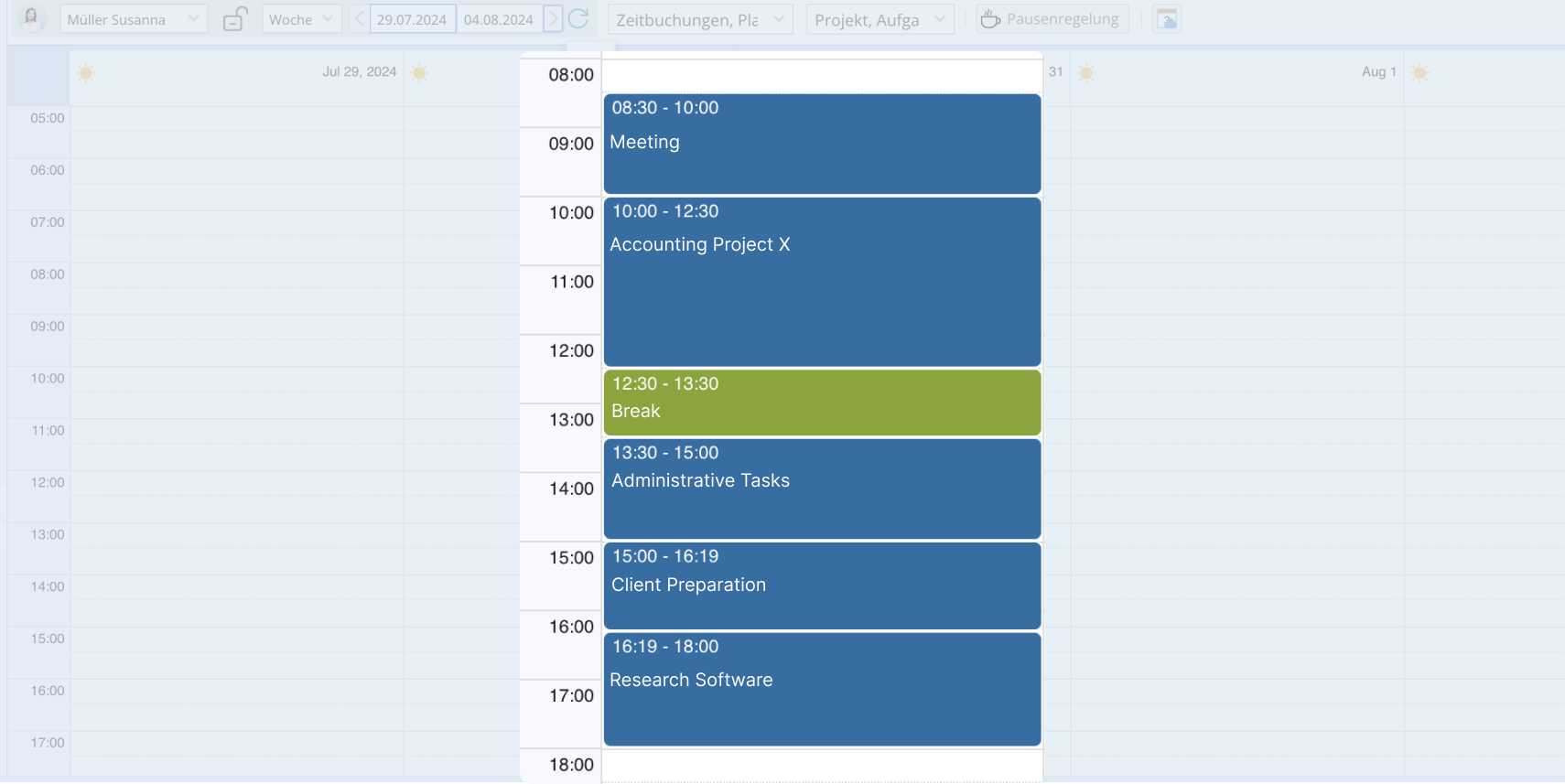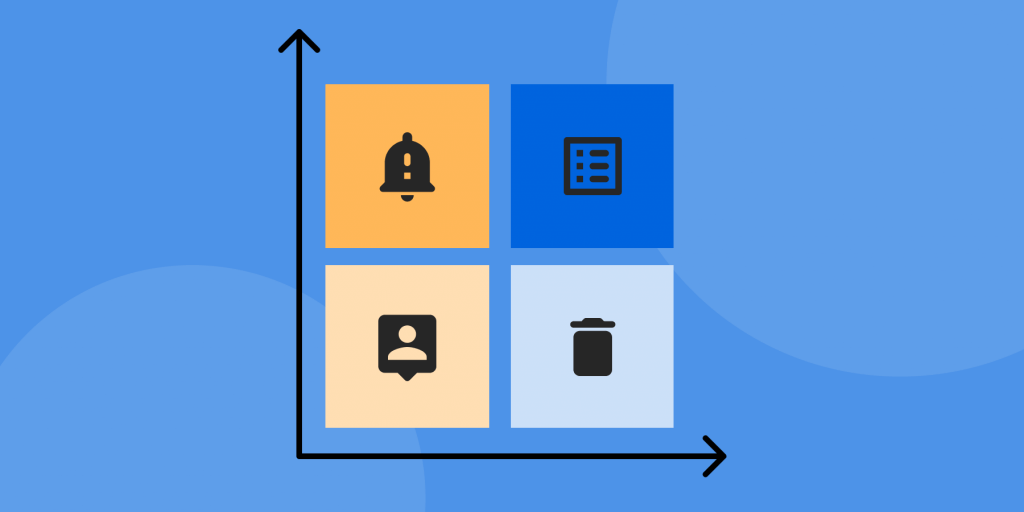The hidden impact of task hopping on your efficiency
by Anna Eisner-Kollmann, 08.05.2024
Do you ever find yourself jumping from one task to another, only to feel overwhelmed and unproductive? Task hopping may be the culprit behind your need of focus and efficiency. This blog delves into the fascinating world of task hopping, exploring its effects on productivity and offering practical strategies to combat this common habit. Get ready to uncover the secrets to reclaiming your focus and boosting your efficiency in a world full of distractions and alleged multitasking.

About task hopping and context switching
You may have heard of multitasking, task hopping, and context switching. These terms describe various forms of simultaneous or rapid task sequencing. But what do they actually mean, and how do they affect productivity?
Are you fascinated by multitasking?
Multitasking means carrying out several activities at the same time. In computer technology, multitasking refers to the fact that a computer processes various programmes at the same time, apparently by switching between tasks many times. It allows many processes to run as if they were taking place simultaneously.
In human behaviour, multitasking refers to a person’s ability to complete more than one task at a time or switch back and forth between different tasks. However, it is often debated whether people can multitask effectively or whether it leads to reduced productivity and quality in individual tasks. Studies in psychology and neuroscience show that the human brain divides attention resources between tasks, and that so-called multitasking typically impairs performance in at least one of the tasks.
The 2017 study Minds and Brains of Media Multitaskers: Current Findings and Future Directions , states that “specifically, relative to light media multitaskers, heavy media multitaskers may have greater difficulty staying on task due to attentional lapses and returning to task following a lapse from goal-relevant behaviour; attentional lapses may negatively impact performance in other cognitive domains, such as memory.”
Why task hopping is a time thief
A study conducted in 2022 with over 600 participants found that participants tried to multitask twice an hour. The word ‘tried’ is aptly chosen. It has already been scientifically proven that performing tasks requiring simultaneous concentration is neurobiological impossible. The human frontal function in the brain appears to be limited to controlling the pursuit of two goals at the same time. We are only able to switch very quickly between different tasks.
Task hopping describes the constant jumping between different tasks. Tasks are not completed simultaneously (as in multitasking) but are processed one after the other. Also known as context switching, it affects productivity, focus, and job satisfaction.
Suppose we weren’t doing several tasks at the same time but switching between them. You probably know the following situation: You’re working on a report, and suddenly, you receive an urgent email that you need to answer immediately. While typing the reply, your phone rings. A stressed colleague needs something ASAP and you are not really listening, so you are trying to end the call quickly. You need to prepare for a meeting that takes place 15 minutes from now. It’s not an unrealistic scene. And here we are in the middle of task hopping, the process of frequently jumping back and forth between different tasks instead of focussing on a single task over an extended period. It can occur in stressful work situations or environments with many interruptions and distractions. In contrast to efficient multitasking, which saves the time and increases productivity, task hopping can often be inefficient and lead to reduced performance. Constantly switching between tasks takes up cognitive resources, as the brain has to continually refocus and adapt to the context of the other task.
Instead of speeding up work, many people tend to switch their focus from one task to the next, resulting in a cognitive switching penalty. The brain needs extra time and energy to switch back and forth between different contexts, which significantly slows down progress on tasks. It makes you feel busy throughout the day, but ultimately, you get less done and are more tired.
Task hopping can have negative consequences for concentration:
- Scattered attention: Constantly switching tasks impairs the ability to focus and stay attentive.
- Reduced efficiency: task hopping, a habit that may seem efficient, can actually lead to mental exhaustion. The constant switching between tasks requires significant mental energy, leading to faster fatigue and decreased productivity.
- Depletion of mental resources: The constant switching requires mental energy and can lead to faster fatigue.
- Error-prone: When concentration declines, the risk of errors increases because you are not fully focused on the task at hand.
- Stress: Feeling overwhelmed and never getting anything done can increase stress levels.
In short, task hopping can make you less focused, less productive and ultimately feel more stressed.
Alternatives to task hopping and multitasking
The following strategies can be helpful to avoid task hopping and multitasking and increase productivity:
- Prioritise: Determine which tasks are important and urgent and focus on completing these first. The ‘Eat the Frog’ method involves completing the most unpleasant or urgent to-do (‘the frog’) first thing in the morning to start the day with a sense of fulfilment and satisfaction.
- Use time blocking: Dedicate specific time slots to certain tasks without allowing other work to be done during this time. Schedule time boxes during the day and concentrate on just one task at a time until they are completed.

- Minimise distractions: Switch off notifications (do not disturb mode) and try to reduce interruptions from colleagues or technology. Sounds really simple, but it’s still very today: leave your mobile phone in your pocket, and you’ll see how often you actually want to reach for it automatically and subconsciously. There are great apps that can help you to stay focused.
- Take breaks: Allow short breaks between different tasks to recharge your batteries. Brain research confirms that we cannot concentrate for eight hours. After around 45 to 90 minutes, our attention, concentration, and performance levels drop. The reason for this is that our glycogen stores are empty.<br< li=””>
</br<> - Use to-do lists: Organise your work with lists and set clear goals to stay on task.
By implementing these points, you can work more organised and focused, leading to better time management and greater work efficiency.
Time tracking is an effective tool for uncovering the hidden ‘time thieves’ such as interruptions in our working day. Showing us how much time we need for different tasks enables us to identify inefficient task hopping or supposed multitasking and optimise our workflows. This transparency helps us set priorities better, plan our time more efficiently and avoid overwork.
No kangaroos in the office
Stop task hopping and start time tracking
No kangaroos in the office
Stop task hopping and start time tracking





